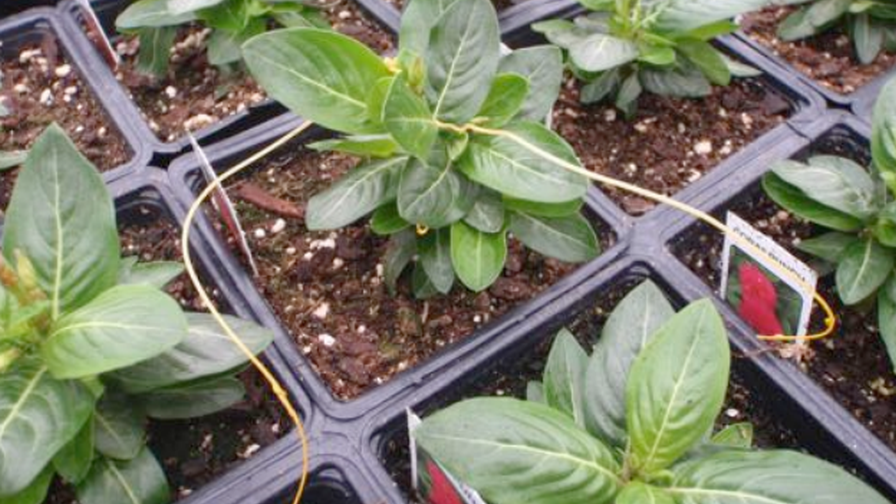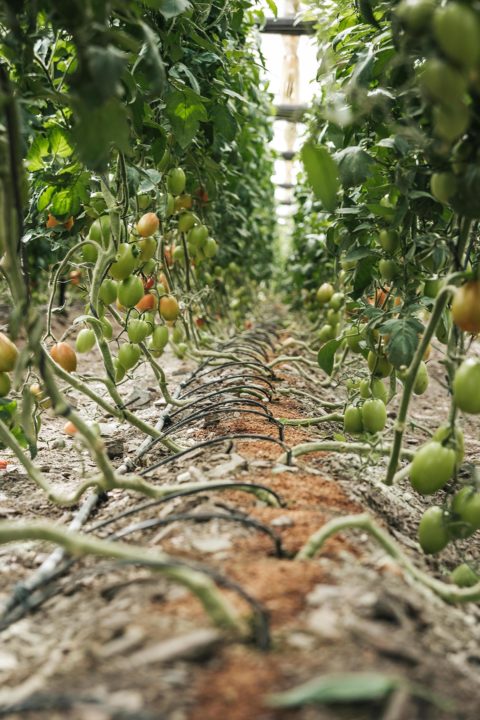Tips on Preventing the Spread of Dodder in Your Plants

Dodder found growing around a vinca plant in a North Carolina greenhouse. Photo: Brian Whipker
Dodder, a parasitic weed with orange, spaghetti-like growth that entwines around plants, can become a significant problem if it is not identified and eradicated quickly.
Dodder infestations in greenhouse settings are uncommon. Usually it comes down to three different avenues for introduction into the greenhouse. The first is in seed-based crops in which dodder seed could be a contaminate. Seed suppliers are careful in the screening process, and these instances would be rare.
A second and more probable cause is that dodder seed may come in with the substrate. Seeds can lay dormant for years and then get mixed into the substrate along with the peat or bark. In the case of a North Carolina greenhouse back in 2014, either of these options could have occurred with a single contaminated vinca plant.
The third possibility is introduction into the greenhouse from infected plants. If a supplier has an infestation and they ship contaminated plants. This usually is only the case with perennial or woody species.
Dodder does not photosynthesize, thus it is classified as a plant that is dependent on a suitable host to survive (a holoparasitic plant). At the beginning of its lifecycle, dodder seed germinate and must find a suitable host within 5 to ten days or the seedling will die. Dodder has the ability to find surrounding plants by detecting airborne volatile organic compounds. Once a host is found, dodder will entwine it and develop haustoria (tap roots) that penetrate into the leaf or stem vascular system and utilize the host plant as a nutrient source. Most dodder species lack chlorophyll or true leaves and the only way they can survive is to parasitize a host plant to obtain nutrients. Once the haustoria have become established, the original root system of dodder dies.
For more information, including identification tips and management strategies, check out this article from North Carolina State University’s Brian Whipker on the E-gro education platform.










